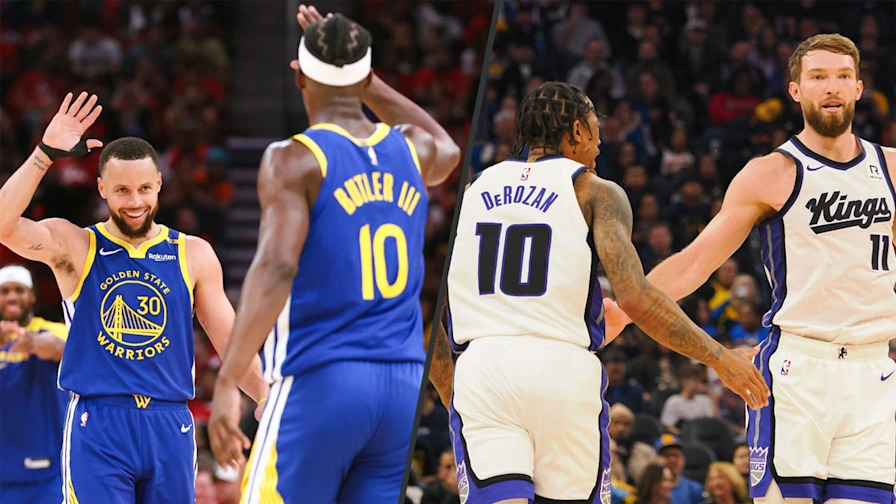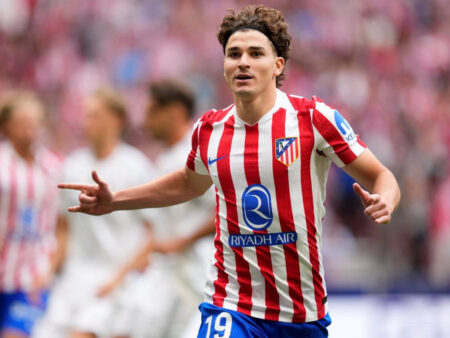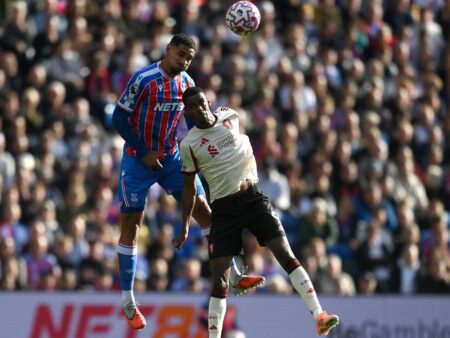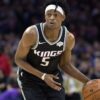
The NBA offseason is in full swing, marked not just by free agency signings but also significant trades shaping team rosters for the 2025-26 season. Several notable players, including Kevin Durant, Jalen Green, and Desmond Bane, were moved even before free agency officially started on June 30. This trade activity continued strongly, with deals like the Brooklyn Nets sending Cam Johnson to Denver in exchange for Michael Porter Jr. and a future first-round pick occurring right as the free agency window opened.
As teams finalize their rosters, here`s a look at some of the key trades and how the teams involved fared.
Wizards Acquire Cam Whitmore from Rockets
Forward Cam Whitmore
Two future second-round draft picks
Wizards: A-
This move represents a low-risk acquisition for the Wizards, bringing in a former first-round selection who has shown impressive production in limited playing time over his first two NBA seasons. Whitmore`s scoring numbers per 36 minutes, though slightly lower last season, would still place him high among Washington`s players. He also contributes defensively with steals and blocks.
Still young, turning 21 soon, Whitmore is part of a significant youth movement in Washington, joining numerous other recent first-round picks. While Washington doesn`t have the same level of investment in Whitmore compared to their own draft selections, he adds to a crowded wing position. However, a rebuilding environment provides Whitmore with the opportunity to develop his game without the pressure faced on a contending team like Houston.
Rockets: C+
It`s understandable that the Rockets might have needed to move Whitmore given his desire for playing time and the team`s roster additions like Kevin Durant. However, this trade feels like a disappointing outcome for a player selected with the 20th pick who was projected much higher and showed flashes of strong scoring as a rookie. Receiving only second-round picks in return a year later seems like a low return.
The primary benefit for Houston is financial, gaining flexibility under the luxury tax apron by replacing Whitmore`s salary with a minimum contract player. This aligns with their hard cap situation this season.
Pistons Land Duncan Robinson in Sign-and-Trade with Heat
Forward Duncan Robinson
Forward Simone Fontecchio
Pistons: B
Adding shooting was a critical need for the Pistons following offseason roster changes. With uncertainty surrounding one guard`s status and another key shooter departing, Detroit needed to address floor spacing. Robinson, known for his high volume and accuracy from three-point range, fits this need perfectly. He could potentially fill a starting role, providing spacing around core players like Cade Cunningham and non-shooters Jalen Duren and Ausar Thompson.
It`s somewhat surprising that Robinson commanded a contract exceeding the midlevel exception, given he wasn`t widely ranked among top potential free agents. While his shooting is elite, he is considered a defensive liability, which could become more pronounced as he ages. Financially, the trade doesn`t significantly impact Detroit`s luxury tax position this season.
Heat: B
Simone Fontecchio saw his playing time decrease significantly after being acquired by Detroit last season, particularly struggling with his three-point shooting percentage compared to the previous year. Historically, he`s a capable shooter around 36%. At his contract value for his final season, Fontecchio offers defensive versatility and should be a good value piece.
This trade helps Miami fill out its roster while remaining below the luxury tax threshold. Avoiding the tax, especially the repeater tax in a third consecutive year, seems like a priority for the Heat after their performance last season. Fontecchio provides a viable rotational piece without pushing the team into a costly tax situation.
Nuggets Add Jonas Valanciunas as Backup Center
Center Jonas Valanciunas
Forward Dario Saric
Nuggets: B+
Finding a reliable backup center behind Nikola Jokic has been a consistent challenge for Denver. Past attempts using the taxpayer midlevel exception have not been successful, with players like Reggie Jackson and Dario Saric (acquired last year) failing to stick in the rotation. Saric, in particular, played very limited minutes for the Nuggets.
Valanciunas offers a proven, experienced option. Although his skill set differs significantly from Jokic`s, he provides a viable presence that the Nuggets have lacked. Coach David Adelman will have options with Valanciunas and potentially a returning young player like DaRon Holmes II. Upgrading from Saric to Valanciunas, facilitated financially by the Cam Johnson trade, improves Denver`s depth and rotational possibilities. This move, combined with other transactions, positions Denver just below the luxury tax line while potentially retaining access to the midlevel exception for further additions.
Kings: C-
The Kings seemingly made this trade, moving Valanciunas less than five months after acquiring him, primarily to create financial flexibility necessary to sign Dennis Schroder without incurring the luxury tax. While addressing their point guard situation, this move weakens their depth at the backup center spot, a need they had previously sought to fill.
It`s unlikely Saric will be a significant contributor, having struggled for minutes elsewhere recently. With the luxury tax potentially acting as a hard cap, Sacramento will be limited to minimum contracts to fill remaining roster spots. Relying heavily on a rookie like Maxime Raynaud for immediate rotation minutes at center seems optimistic.
Nuggets and Nets Exchange Michael Porter Jr. for Cam Johnson
Forward Cam Johnson
Forward Michael Porter Jr.
Unprotected 2032 First-Round Pick
Nuggets: C
On the surface, Cam Johnson and Michael Porter Jr. are similar players – combo forwards who shoot well from three and score around 19 points per game. The crucial difference lies in their contracts; Johnson is on a much smaller deal than Porter Jr.`s max extension. This financial saving is significant for Denver, particularly with future salary considerations.
However, giving up their only unprotected first-round pick implies this move needs to do more than just save money; it must improve their championship odds during Jokic`s prime. While the trade opens up slightly more midlevel exception space, the value of a 2032 pick could be substantial. Health is also a factor; while Porter Jr.`s back is a long-standing concern, Johnson has also dealt with injuries throughout his career.
Nets: B
Receiving just one first-round pick might seem underwhelming given the significant salary relief provided to the Nuggets. However, an unprotected pick in 2032 carries considerable potential upside, as Denver`s situation by then is highly uncertain. The multiple picks Denver has already traded could make rebuilding difficult, potentially making this a valuable asset down the line.
Furthermore, Brooklyn can potentially benefit from Michael Porter Jr.`s presence. He will be on an expiring contract next season and could put up strong statistics on a rebuilding Nets team, either increasing his trade value or providing floor spacing for their young guards. Brooklyn also retains significant cap space after this transaction, offering further flexibility for future moves.
Hornets Acquire Collin Sexton, Jazz Receive Jusuf Nurkic
Guard Collin Sexton
2030 Second-Round Pick
Center Jusuf Nurkic
Hornets: A
One potential concern for Charlotte is that Collin Sexton`s effectiveness might make it harder for them to bottom out. Last season, lineups without LaMelo Ball struggled significantly offensively. Sexton provides a proven, efficient scorer, which should help the Hornets be more competitive alongside their young core.
Sexton developed into a high-volume, efficient scorer in Utah, contrasting with many of Charlotte`s players who had below-average shooting efficiency. The trade doesn`t significantly alter the Hornets` salary sheet, as both players are on expiring contracts of similar value. This also provides the flexibility to trade Sexton later if the team pivots back towards prioritizing lottery positioning. The trade also signals a need for center depth after moving both Nurkic and another player, but Nurkic was not seen as part of the team`s long-term future.
Jazz: D
Giving up a second-round pick to facilitate this trade suggests there wasn`t a strong market for Sexton, likely due to Utah`s existing depth at guard. With recent draft picks added to their backcourt, the Jazz had an urgency to move Sexton and create playing time. Being in a position where you have to give up an asset to offload a player indicates limited leverage.
Nurkic`s likely role with the Jazz is questionable, especially with incumbent center Walker Kessler and other frontcourt options like John Collins and Kyle Filipowski. It`s probable that Nurkic primarily serves as an expiring salary to be potentially moved again at the trade deadline, allowing Utah to take on a longer-term contract using projected cap space for 2026-27. This feels like a move driven by necessity rather than strategic improvement.
Cavaliers Trade for Lonzo Ball, Bulls Acquire Isaac Okoro
Guard Lonzo Ball
Forward Isaac Okoro
Cavaliers: A
After a long absence due to a knee injury, Lonzo Ball returned last season and showed flashes of his valuable skills, particularly as a secondary playmaker and strong help defender. While his shooting wasn`t fully back, his ability to impact the game in other ways makes him a potentially excellent fit for Cleveland, a team needing more passing and improved perimeter defense.
Following a successful regular season, the Cavaliers appear committed to their core, and adding Ball, if healthy, makes them stronger contenders in the East. Ball`s injury history is a significant concern, but his knee itself wasn`t the primary issue last season; other injuries sidelined him. Isaac Okoro, while a solid defender, had limited impact in the playoffs due to offensive limitations. In a worst-case scenario, Cleveland clears Okoro`s future salary and saves some tax money. Acquiring a potential contributor like Ball without giving up draft assets is a major win for the Cavaliers.
Bulls: B-
Similar to a previous trade, this deal involves the Bulls wisely swapping an older player (Ball, 27) for a younger one (Okoro, 24). For a team not focused on immediate deep playoff success, Okoro`s developing offensive game and strong defensive presence are less problematic. He has shown improvement in three-point percentage, albeit on low volume, and is rated highly as a defender.
The concern lies in the Bulls` repeated inability to extract significant value in trades. While acquiring Okoro and a previous player might be slight improvements for them, the context is that the teams they traded with gained significant advantages. Chicago should have been in a stronger position to demand additional compensation, either draft picks or other assets, especially considering the financial relief provided to the Cavaliers.
Suns Acquire Mark Williams from Hornets in Deal Including Picks and Micic
Center Mark Williams
Guard Vasilije Micic
2025 First-Round Pick (No. 29)
Worst of Cavaliers/Timberwolves/Jazz 2029 First-Round Pick
Suns: C+
This trade, followed immediately by selecting another center in the draft, initially seemed confusing. However, a possible strategy is to emulate teams like Dallas by having depth at center, rotating players like Williams and the drafted player to maximize effort. Depth is crucial for Phoenix given Williams` significant injury history.
Williams` past injuries (back bruise, foot strain) limited his availability and likely reduced his trade value, making him attainable for Phoenix using lower-upside picks. Giving up two first-rounders leaves the Suns with minimal draft capital moving forward. Financially, the deal makes Phoenix more expensive as they had to pick up Micic`s option to match salary. They might need to waive another center to save money, but Williams` future contract will add significant cost by 2026-27. While getting younger at center, Phoenix hasn`t found a way off the second apron escalator.
Hornets: B-
Compared to a previous trade for Williams that fell through (reportedly involving a valuable Lakers pick), this return lacks similar upside. The 2029 pick acquired is unlikely to be a high lottery selection. On the positive side, Charlotte secures two first-round picks, locking in value for a player they were seemingly ready to move on from due to his injury history.
It`s somewhat disappointing to reach this point, given Williams was a recent lottery-adjacent pick with potential who is still young. His injury availability (missing over half of possible games since being drafted) was likely a source of frustration. Vasilije Micic, included for salary matching, is expected to seek a buyout and potentially return to Europe, essentially resulting in him receiving money for his inclusion in the trade.
Three-Team Trade Sends Kristaps Porzingis to Hawks, Georges Niang to Celtics, Terance Mann and Pick to Nets
Forward Georges Niang
Future Second-Round Pick
Center Kristaps Porzingis
Future Second-Round Pick
Guard Terance Mann
2025 First-Round Pick (No. 22)
Celtics: B
This deal is part of Boston`s financial recalibration following their championship. Kristaps Porzingis brought a unique offensive dimension and rim protection, valuable when healthy. However, his limited availability and injury concerns during the playoffs made him a somewhat luxury piece.
Trading Porzingis`s large expiring salary for Georges Niang`s smaller one significantly reduces Boston`s luxury tax burden, saving a substantial amount. This move, combined with a previous trade, provides considerable financial relief. While needing to address center depth after this trade, the Celtics retain their core stars and most of their future first-round picks, allowing them flexibility to build a supporting cast around them, particularly important with Jayson Tatum`s injury status impacting next season.
Hawks: B
Atlanta benefits from this trade in both the short and long term. Immediately, Porzingis fits well with their young, athletic frontcourt by providing needed shooting and offensive versatility. Coach Quin Snyder can pair him with either of their current starters. This adds firepower crucial for a team that doesn`t control its own first-round picks in the near future, creating incentive to win now.
Long term, Porzingis is on an expiring contract, offering flexibility to either extend him or pivot to a roster reset next summer, aligning with Trae Young`s player option timing. Getting off Terance Mann`s multi-year salary also improves Atlanta`s financial flexibility, allowing them to fill out their roster using cap space or exceptions.
Nets: A
As a team with significant cap space, Brooklyn was in a position to demand a premium for taking on Terance Mann`s contract. This trade adds another first-round pick to their unprecedented haul of draft capital, giving them immense flexibility to potentially trade up or accumulate future assets. No NBA team in history has made five first-round picks in a single draft.
Beyond the pick, the Nets could also look to rehabilitate Terance Mann`s value. He was previously considered a key asset by the Clippers. If he returns to form, he could provide valuable contributions or become another trade piece. Even after this deal, Brooklyn retains substantial cap space, allowing them to pursue young free agents or absorb more contracts via trade.
Wizards Trade Poole and Bey to Pelicans for McCollum and Olynyk
Guard Jordan Poole
Forward Saddiq Bey
2025 Second-Round Pick (No. 40)
Guard CJ McCollum
Forward Kelly Olynyk
Future Second-Round Pick
Pelicans: C-
This trade essentially boils down to swapping CJ McCollum`s expiring salary for Jordan Poole`s two remaining years at a similar but slightly higher cost. The Pelicans also swap a veteran for Saddiq Bey, who is recovering from injury but on a team-friendly contract. While the deal saves New Orleans some money overall, it doesn`t solve their long-term salary concerns, especially with Poole`s contract extending further.
The Pelicans are betting on Poole returning to the form he showed with Golden State, though his time with Washington was inconsistent. While he improved his three-point shooting last season, his defensive lapses and scoring focus might not fit well on a team aiming to compete. With a key player injured, Poole might be needed as a starter, which could be a downgrade from McCollum. Taking on Poole`s contract for two years feels risky for a team already navigating salary cap pressures.
Wizards: B+
Acquiring older guards in a rebuild seems counter-intuitive, but the value here lies in CJ McCollum and Kelly Olynyk`s contracts and skills. Both are expiring salaries that provide significant cap relief potential for the Wizards in the future. This trade effectively serves as a “do-over” for the previous Jordan Poole acquisition, cleaning up the Wizards` salary sheet which is now among the league`s cleanest looking forward.
McCollum and Olynyk also fit a rebuilding environment on the court in the short term by providing floor spacing and shooting, which can help the younger players develop. While they might not finish the season with the team, their presence can be beneficial until they are potentially moved again for further assets or simply allow their contracts to expire, creating significant cap space.
Celtics Trade Jrue Holiday to Trail Blazers for Anfernee Simons and Picks
Guard Anfernee Simons
Two Future Second-Round Picks
Guard Jrue Holiday
Celtics: B-
This trade was financially motivated for the Celtics, aimed at reducing their substantial luxury tax bill and moving closer to avoiding the stricter penalties of the second apron. With Jayson Tatum`s injury creating uncertainty for the upcoming season, adjusting the team`s financial outlook made sense. Jrue Holiday, due to his salary and age, was a logical candidate to move.
Swapping Holiday for the younger Anfernee Simons helps with age profile but represents a significant defensive downgrade for Boston, a team that prided itself on defensive versatility. Simons is known for his offensive skills, particularly shot creation and pull-up shooting, which could be valuable while Tatum is sidelined. However, his defensive limitations are notable. While Simons could be a valuable short-term asset, his long-term fit, especially once Tatum is healthy and perimeter defense becomes paramount again, is less clear. Boston can wait to decide on a potential extension for Simons, giving them flexibility.
Trail Blazers: C-
Acquiring a veteran like Jrue Holiday, who is older and on a substantial contract, seems counter-intuitive for a rebuilding team like Portland. The primary value for the Trail Blazers here is likely the intention to trade Holiday again soon for assets that better fit their long-term timeline, similar to how they acquired and then traded a previous star guard. Holiday`s age and salary don`t align with the development curve of their young core players.
While Holiday is a high-level player, the cost of acquiring him (giving up a younger, offensive-minded player and picks from Boston) and the likelihood that he won`t be a long-term piece make this a move focused purely on asset flipping rather than roster building. The grade reflects that the direct exchange isn`t ideal for their current phase, even if they succeed in the subsequent move.











